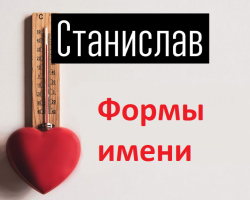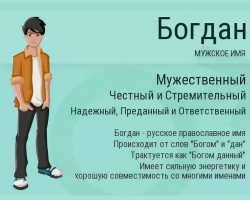The question arises, why does the spine hurt after sleep? Read the article. It has many useful tips, recommendations.
Content
- Why does the spine and the back hurt after sleeping - between the shoulder blades, the lower back, the thoracic region: causes
- The spine hurts in the morning after sleep - the pathology of internal organs: heart, kidneys, gastrointestinal tract, lungs, gall bladder, swelling
- The back hurts after sleep in the spine: intervertebral hernia
- After sleep, the spine hurts in the middle: curvature, scoliosis
- Can a spine with osteoporosis hurt after sleep?
- Why can a back hurt after sleep: osteochondrosis
- The back and spine hurt after sleep: Bekhterev disease
- The spine hurts in the middle of the back after sleep: intercostal neuralgia
- The spine hurts a lot after sleep during pregnancy: what to do?
- The spine hurts after sleep: which doctor to contact?
- Spinal pain after sleep: diagnostic methods
- The back hurts in the spine after sleep: how to treat?
- Bubnovsky: exercises for the spine after sleep and other pains
- Video: sleep and back pain
Almost every person happens that after sleep, the back hurts. We immediately begin to look for the reason, succumb to advertising information on TV, and immediately plan to buy a new mattress, change the pose for sleeping or trying to relax more in the afternoon. However, the true cause of such pain can be hidden in a completely different way. In this article, we will consider the true root of the evil of such an ailment and what needs to be done to make life easier. Read further.
Why does the spine and the back hurt after sleeping - between the shoulder blades, the lower back, the thoracic region: causes

A severely expressed pain syndrome in different parts of the back - the spatular region, in the thoracic region or in the lower back, may appear after sleeping both healthy people and those who have chronic diseases of not only the spinal column, but also the internal organs.
In healthy people, the back pain is provoked by the wrong way of life, a long stay in a tense uncomfortable position during the work during the day. If on the eve of the night the back pain could be felt slightly, and the person took an anesthetic drug, then in the morning after waking up, it usually intensifies and becomes unbearable. There may be two main reasons for this:
- The action of an analgesic drug has endedwhich the patient accepted before bedtime.
- Weakening of the protective functions of the body during sleep.
Such external causes of back pain can be eliminated by simply changing the treatment regimen, daily routine or reducing physical activity. The internal causes of the pain syndrome will have to deal with a medical examination by an experienced doctor.
Important: When any ailments related to the back area appear, you must contact the doctor. If the pain is constant, then the specialist will prescribe tests and conduct other diagnostic measures. This is the only way to make the correct diagnosis to prescribe adequate treatment.
Most often, as internal causes of back pain, there are degenerative diseases of the spine, the body of the vertebrae and intervertebral discs. These are well -known pathologies:
- A hernia of intervertebral discs
- The processes of progressive osteochondrosis
- Rheumatic inflammation of bone and articular tissues
The internal causes of pain in the shoulder blades, the thoracic region or in the lower back may include acute states in chronic diseases of the kidneys, stomach and intestines, gall bladder, organs of the bronchopulmonary system. The inflammatory process in the listed systems is always accompanied by severe pains that radiate to the back. Read more about this further.
The spine hurts in the morning after sleep - the pathology of internal organs: heart, kidneys, gastrointestinal tract, lungs, gall bladder, swelling

Most often, morning pain in the back is associated with destructive changes in the cartilage tissue of intervertebral discs. These changes act as symptoms of osteochondrosis of the spine or illness of Bekhterev. If unpleasant sensations appear in the back, and the spine hurts in the morning after sleep, but at the level of, for example, the region of the heart, kidneys or other internal organs, then this indicates the pathology of internal organs and not only. Such irradiation occurs for the following reasons:
Pain in the heart:
- More often it is a manifestation of cervical or breast osteochondrosis. Chopping pain in the left half of the chest is characteristic.
- The development of vertebrates with localization in the left half of the chest.
- Acute pain in the heart with inflammation of rib cartilage.
- In acute heart attack, pain may occur not only in the heart, but also to be given to the back.
Such a symptom complex is known among cardiologists as "Titsa Syndrome". In this situation, it is necessary to conduct differential diagnosis with acute myocardial infarction.
Pain in the kidney area:
- Such a pain syndrome is localized just above the lower back and is accompanied by swelling of the face, the lower extremities.
- In the legs after sleep, a feeling of severity and pronounced swelling is noted. The nature of the lower back pain in the kidney disease is aching.
- The patient also experiences a feeling of tension in the lower abdomen, on the inner surface of the hips.
- Aching pains can be replaced by sharp attacks of acute pain - renal colic.
- If the back hurts with kidney diseases, then this symptom is accompanied by impaired urination. Frequent urination with an admixture of blood in the urine is a formidable sign of the pathological process in the tissues of the kidneys.
Pain in the gastrointestinal tract:
- Back pain can be a “reflected” symptom.
- This happens when the pain process is localized in the intestines. At the same time, an acute pain sensation is manifested on the surface of the back.
- Nervous compounds broadcast pain from the gastrointestinal organs on the lumbar and thoracic spine.
To diseases Gastrointestinal tract Such pain syndrome includes:
- Acute and chronic inflammation of the appendix
- Pathological obstruction in the departments of the small and large intestine
- Perforation of the mucous membrane of the small intestine
- Ulcerative inflammation of the mucous membrane of the large intestine with colitis.
Remember: Painful pains that give to the right and left of the spinal column are characteristic of diseases Gastrointestinal tract.
Lung diseases:
Pain in the thoracic spine can appear with such pathologies:
- Acute or chronic pneumonia
- Tuberculosis
- Lungs' cancer
Gall bladder:
- Acute inflammatory changes in the walls of the gallbladder, which are caused by the presence of stones in this organ, lead to irradiation of back pain.
- More often, unpleasant sensations appear in the right side or in the shoulder.
- Also in the area of \u200b\u200bthe location of the right shoulder blade.
Edema of the periporal muscles:
- Difficult condition for well -being.
- When waking up, a person experiences a strong tension in the back.
- This pain has such severity that the patient cannot physically move to a vertical position and get out of bed on his own.
Advice: Do not tighten with a trip to the hospital if you have unpleasant sensations in the back. This can be a symptom of a serious pathology of internal organs.
The back hurts after sleep in the spine: intervertebral hernia

If the fibrous ring is protruding, then the roots of the spinal nerves are squeezed and pain of different intensity occurs. Often, with an intervertebral hernia, an inflammatory process develops, which is accompanied by swelling. With this condition, the back may hurt after sleeping in the spine.
- In the affected area, stable muscle tension develops, which can lead to their spasm and the formation of a functional block.
- Depending on the localization of the intervertebral hernia, pain appears in areas that innervates the pierced nerve.
- Therefore, the back can hurt in different places, and with a neglected disease, disorders of internal organs occur.
During the intervertebral hernia, sleep is disturbed due to the occurrence of pain when changing the position of the body and even without obvious reasons. It is recommended to choose a mattress of suitable stiffness.
- It is difficult to get out of bed, and pain arises suddenly and have a diverse character - from a stupid, aching in the back, to sharp, giving out in the limbs.
- If such symptoms appear, consult a doctor.
The first visit should be paid a therapist who will competently prepare the patient to receive with narrow specialists.
After sleep, the spine hurts in the middle: curvature, scoliosis

Scoliosis or curvature of the spine is a disease in which the spinal column can evade up from the original position. Clutching the nerve endings and blood vessels is observed. In the initial stages of its progression, a person does not feel malaise. Only as the disease further develops, serious complications are observed.
- At night, the human spine is almost motionless.
- Violation of the sleep and rest regime is accompanied by its curvature.
- After sleep, the pain only increases and it seems that the entire spine hurts in the middle of the back.
- In later stages, the disease is already extensive.
- The vertebral column has external curvature, violations in the work of internal organs occur, severe pain in the spinal parties appears.
In children and adolescents, tissue has high elasticity, so adults often fall into risk group. Scoliosis is accompanied by additional ailments. These include:
- Inflammation in tissues and muscles, on which pressure exerts a curved spine.
- Ischemia - Oxygen and trophic starvation develops, because the vessels are under pressure.
- Nerve endings are damagedwho send a signal to the brain.
- Repeated damage to nerve roots.
Scoliosis is better treated in childhood, when tissues are more elastic and curved spinal table is well lend itself to correction with massage, physical exercises and other methods.
Can a spine with osteoporosis hurt after sleep?

Osteoporosis is quite common, especially among women, and is characterized by enhanced leaching of calcium from the structure of bones. This disease develops secretly, in the initial stages there are no pain. With a further increase in calcium deficiency, the bones become fragile and the body of the vertebral body is possible. This is sometimes manifested by pain, which intensifies during movements.
- But the intensity of pain increases when adjacent vertebrae break. This already makes a person see a doctor.
- With osteoporosis, the front part suffers - from 7 to 10th The vertebrae of the thoracic region, subjected to compression.
- There may not be pains, but when they begin to deform 12th thoracic and 1st lumbar vertebrae, there is acute pain, increasing during physical exertion.
The intensity of pain in the spine with osteoporosis after sleep is minimal. It grows throughout the day, which is associated with the need to perform physical work.
Why can a back hurt after sleep: osteochondrosis

One of the common causes of pain after sleep that cause discomfort is osteochondrosis. These are degeneration processes that occur in the cartilage and bones of the vertebrae, which contribute to pinching of the spinal nerve.
The disease leads to a change in the circulatory system and innervation of organs in the spine and spinal part. Osteochondrosis can be observed not only in the spinal department, but also spread to other parts of the human body:
- If the focus of pain is concentrated in the neck or in the occipital part, then unpleasant and stretching sensations appear in the shoulders and between the shoulder blades.
- With thoracic lesion, osteochondrosis, the pain gradually moves to the chest and back.
Osteochondrosis accompanies additional unpleasant sensations:
- Headache
- Noise in ears
- Dizziness
- Vision of vision
- Numbness of some parts of the body
- Changing blood pressure indicators
At the initial stage, it is moderate, but then develops into acute and piercing. With the lumbar type, pain is concentrated in the spinal column and lower back. The pain appears instantly and does not retreat throughout the inflammatory process.
The back and spine hurt after sleep: Bekhterev disease

The disease is systemic chronic in nature, affects mainly the joints of the spine, the area of \u200b\u200bparavertebral soft tissues, and sacral and illegal joints. During the development of the disease Bekhtereva, the back and spine hurt, more often during the rest, especially worrying at night or in the morning - after sleep.
It is worth knowing: Stock and pain are manifested in the lumbar and sacral spine. After a person diverges a little, he will do gymnastic exercises, it becomes easier.
With the progression of the disease, the pain goes to the entire spine. Occurs:
- Limitation of mobility
- Muscle stiffness
- Stiffness
- Gradual atrophy
After this, ankylosing of the joints of the spine occurs, which is manifested by a significant decrease in human growth, limiting the mobility of the chest.
The disease can be identified using:
- MRI - At the very beginning of the disease
- Radiography - at the second stage of development of the pathological process
Bekhterev disease It is important to identify at the initial stage of its development. This will help stop the process of ankylosis and return a person to a normal life.
The spine hurts in the middle of the back after sleep: intercostal neuralgia

Internshabny neuralgia is a disease that is characterized by acute pain associated with irritation or compression of the nerve endings or the consequence of the zoster herpes.
Important: Strong malaise, starting during the period of illness, cannot be compared with other pathologies. It is unpleasant, burning and heavily stopped.
Neuralgia has a large number of symptoms that introduce discomfort to the patient's life way. Brightly expressed signs of the disease manifest after sleep. Therefore, if your spine hurts in the middle of the back in the morning during awakening, then it can be neurological disease. It is worth knowing the following:
- Some signs of pathology are often found immediately, while others are visible after a while.
- In addition to pain between the ribs, discomfort can appear in the stomach and in the heart muscle.
- Discomfort can also be observed in the back, spine or under the spatula.
Nervous fibers have a large number of branches throughout the human body. Exact signals are transmitted to the organs. It is easy to determine intercostal neuralgia by the symptoms described above. However, the disease can be hidden behind similar pathologies. The pain can be stupid or aching. At a certain period of time, its strengthening is observed.
The spine hurts a lot after sleep during pregnancy: what to do?

During pregnancy, a woman has to experience different discomfort associated with her body. Often you have to change the position of the case during sitting or lying, so that the unpleasant sensation will go away. But it happens that the spine hurts a lot in the morning after waking up. So that the pain does not bother the pregnant woman after sleep, you need to follow these rules:
- Wear the right shoesSo that she supports the foot, and only shut up sitting. Do not wear heels.
- It is necessary during sleep to provide the spine with good supportso sleep on a mattress with medium rigidity.
- Pregnant women should not load their body across. Therefore, sitting down in a chair, put the pillow behind your back. Do not sit on chairs without a back so that the seat is on a solid basis. Doctors generally recommend sitting for no more than an hour.
- Falling asleep, put the pillow under the tummy and between the legs.
- If there are no contraindications, do not neglect sports activities. It is also good preparation for childbirth. But do this under the supervision of a professional coach.
- Adhere to diets and eat products rich in calcium - Milk, cottage cheese, cheese, as well as sea products.
- Follow the weight, since extra pounds overload the spine.
- Do not stand for a long timeAlways make support for something.
The implementation of these tips will help to unload and strengthen the spine so that it does not hurt after sleep and at another time of the day.
The spine hurts after sleep: which doctor to contact?

From the foregoing, it is clear that there are a lot of causes in the back after sleep. Therefore, it will be best if the patient goes to the doctor in case of frequent repetition of such unpleasant sensations. Which doctor to contact if the spine hurts after sleep? Here are the tips:
- First, contact a local therapist or a general practitionerAs it is now customary to call it.
- The doctor will look at the history of diseases in the outpatient map, where all the pathologies are recorded, asking for the nature of pain, working and rest mode and conditions created for night rest.
- At this stage, the doctor will advise how to organize a dream better and can recommend medicines.
- If necessary, the doctor can send the patient to further examination, including consultations of specialized specialists, namely neurologist.
The doctor will also prescribe tests and other diagnostic procedures. This will help to correctly diagnose and prescribe treatment.
Spinal pain after sleep: diagnostic methods

The selection of diagnostic methods for pain in the spine after sleep is mainly focused on the distribution of patients with specific or non -specific, discomfort. Specific pain is defined as a symptom caused by a certain pathophysiological mechanism:
- Pulpose hernia
- Various kinds of infections
- Osteoporosis
- Rheumatoid arthritis
- Fracture
- Tumor
Nonspecific pain in the lower back is defined as a symptom without a clear specific cause, that is, the pain in the back of unknown origin.
It is worth knowing: Near 90% all patients with lower back pain will have a nonspecific pain in the lower back, which, in fact, is a diagnosis based on the exclusion of specific pathology.
The methods of diagnosis of back pain after sleep should include the following processes and procedures:
- Surrender blood and urine tests
- Ultrasound of internal organs
- MRI of the spine
- CT spinal column and nearby fabrics
- Radiography
- Palpation of the doctor in the first examination of the patient
A study was recently conducted in USA. It showed that of all patients with back pain in primary care:
- 4% has a compression fracture
- In 3% of cases - spondylolist
- Minimum percentage - in 0.7% - a tumor or metastases
- 0.3% are sick of ankylosing spondylitis
- In 0.01%of cases there is an infection
Therefore, it is important for pain in the back to carry out the correct diagnosis.
The back hurts in the spine after sleep: how to treat?

The pain in the back in the spine after sleep is a symptom that every second person can be subject to. As mentioned above, such symptoms occur with different diseases. Accordingly, treatment will differ depending on the diagnosis:
Blockade method:
- An excellent analgesic procedure that is used for diseases of the bones, nerve endings, muscle pain and others.
- It is an injection in the back.
- The ongoing nerve cells that are subject to disease are disconnected using local anesthesia performed in the back.
- This method has a high effect and treats pain well, but use it in rare cases, since it is considered difficult to perform and it has a high probability of complications in the patient.
- This therapeutic method is performed only in the hospital and under the supervision of a health worker.
- It gives the results for a short period of time and it can only be carried out when resolving the attending physician and no more than one or two times a year.
Antidepressants and antiepiletics:
- Particular attention should be paid to chronic pain syndrome, the impulses of which occur in the cerebral cortex.
- If these impulses are not blocked, an inflammation focus may form.
- In this situation, the method of analgesic blockade will not be able to calm the patient's pain.
- The patient is prescribed antidepressants and antiepileptics, which affect the area of \u200b\u200bthe brain.
Anesthesia using various drugs:
- Analgesics, muscle relaxants and non -steroidal drugs.
- All of them have anti -inflammatory properties.
- They are prescribed only by a doctor in the necessary dosage, interval and duration of admission.
Using various ointments:
- Effectively rub various ointments and gels into the back, which the doctor prescribed by the prescription.
- These drugs act on receptors that are located on human skin.
- They enhance the blood flow and accelerate the exchange process.
- They are used mainly as anesthesia and treatment of inflammation in the joints, muscles.
The use of drugs for the treatment of pathologies of internal organs:
- If the back pain is caused by the disease of the liver, kidneys, heart or other system, then this organ should be treated.
- If you act only on back pain, then this can worsen the patient's condition and lead to undesirable consequences.
Important: Do not self -medicate, it is dangerous for life and health!
Bubnovsky: exercises for the spine after sleep and other pains

Dr. Bubnovsky developed his own methodology, which helps a person get rid of back pain. Exercises for the spine are very simple and can be performed after sleep or in the evening. They help with different back pains associated with joints, muscles and neuralgia.
Study the methodology of Dr. Bubnovsky using detailed articles on our website on this link. You will also find a video that explains in detail how to do exercises, in what position of the case and how much time.
If a person hurts something, and especially the back and after sleep, then this condition spoils the mood for the entire upcoming day. Therefore, when unpleasant symptoms occur, immediately consult a doctor for help and for treatment to suffer and live a full life. Good luck!
Video: sleep and back pain
Read articles on the topic:








After sleeping, the vertebrae sometimes hurt. But I honestly did not pay attention to it, I did not attach the meaning that it could be a serious problem. Disassure the back of the rheumalgon gel 911, relaxes and ceases to hurt. And I live on. Now I want to undergo an examination after reading the article. Thank you.
It’s easier for my back after sleep, but I picked up the mattress very carefully, so I agree with the authors, this is important. But there are pains, especially after summer cottages. Sometimes it is impossible to just endure. And since I also have gastritis, the funds are not suitable. I picked up Ethorelex, it contains etoricoxib. At the moment, for all research, this is the most effective and safe NSAID.
Here you can still read about the pain in the spine, its causes and treatment products.
During the exacerbation of rheumatoid arthritis, I sometimes have tight. I used to accept imported funds, but they are not expensive and do not act long, so she asked the rheumatologist to choose something else. As a result, I use etyrelex, it is just more affordable in price and the action retains almost a day, which completely suits me.